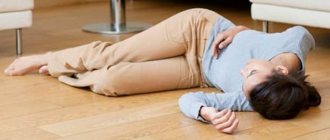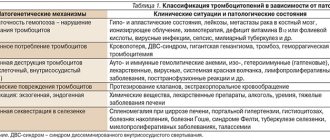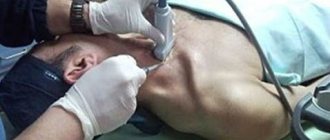Author:
Amelicheva Alena Aleksandrovna medical editor
Quick Transition Treatment of Dissociative (Conversion) Disorder
Dissociative (conversion) disorders are conditions characterized by involuntary withdrawal from reality, which is expressed in partial or complete loss of conscious control over memory, self-awareness (depersonalization), sensations (derealization), and motor functions.
Read more about conversion disorder
The definition of “conversion” refers to the exclusively psychological root cause of the phenomenon, which expresses itself not at the psychological level (for example, anxiety), but through physical symptoms reminiscent of signs of a nervous system disorder.
They usually appear from mental stimuli like conflicts. In most cases, the ability to swallow, walk, hear or see is impaired. According to most scientists, improvements can be observed in patients with the help of a timely and correct approach to treatment.
Photo by Jesper Aggergaard on Unsplash
There is a chance of paralysis of an arm or leg, or patients may lose their sense of touch. Doctors usually conduct quite a lot of medical examinations and tests to make sure that such manifestations are not a consequence of a physical illness.
Encouragement from a trusted loved one or the use of hypnosis may help. Conversion disorder, in most cases, appears between infancy and early adulthood, but the disorder can appear at any time.
The doctor's helplessness regarding these symptoms is reflected, among other things, in the variety of concepts that refer to these complaints. We are talking about a functional disorder of individual organs or organ systems, and any tissue changes, as a rule, are not detected. Unlike conversion symptoms, an individual symptom has no specific meaning, being a nonspecific consequence of impaired bodily function. F. Alexander [12] described these bodily manifestations as accompanying signs of affect without the nature of expression and designated them organ neuroses. Psychosomatic disorders in a narrower sense (psychosomatosis). Psychosomatic disorders are based on a primary bodily reaction to a conflict experience, associated with morphologically established changes and pathological disorders in organs. The corresponding predisposition may influence the choice of organ. Historically, this group includes classic pictures of the following psychosomatic disorders:
- bronchial asthma
- ulcerative colitis
- essential hypertension
- neurodermatitis
- rheumatoid arthritis
- duodenal ulcer
Along with traditional psychotherapeutic techniques in the treatment of patients with neuroses and psychosomatic disorders, in recent years the method of biofeedback (BFB) has become more widespread. The biofeedback method (adaptive biofeedback method, biorehabilitation, operant conditioning method, etc.) is a modern rehabilitation method aimed at activating the body’s internal reserves in order to restore or improve physiological skills [3]. In psychotherapeutic practice, the biofeedback method can be used in two fundamentally different ways: either as a means for acquiring physical self-regulation skills in order to prevent the emergence of psychosomatic or neurotic disorders, or, if the patient suffers from neurosis or psychosomatic disease, as a means for treating functional disturbances in the corresponding system of physiological reactions. The effectiveness of biofeedback training is highest in patients who really cannot relax, even if they consciously want to. Such persons often do not even notice how constantly tense they are. With the help of biofeedback, this overstrain can be brought to their consciousness and this objective information will allow them to form the skill of voluntary relaxation. Like any therapy, treatment using biofeedback begins with a detailed history, supplemented by explanations of the essence and principle of action of biofeedback training (first session). At the same time, it is necessary to especially emphasize that we are talking about acquiring self-control skills, in which the body learns in a certain way how to help itself independently. Emphasizing the patient's active role also increases motivation to regularly perform the prescribed home exercise. The second session is designed to study the psychophysiological pattern of reactions exhibited by this patient in connection with the problem behavior to be treated. To record the pattern of psychophysiological reactions, the patient is equipped with various measuring sensors that record the necessary physiological functions. Then the patient is asked to sit quietly with his eyes closed for 5 minutes. This period of time serves to record the initial values. After this, the patient should try to relax for about 5-10 minutes. This demand usually has the opposite effect, the patient begins to tense up, which changes the measured values accordingly. Sitting quietly without doing anything specific is, especially for those suffering from symptoms of stress, already a serious psychological burden. After a period of relaxation, the actual stress test is performed to measure the patient's excitability and subsequent calmness. It is not entirely easy to create stress in an artificial situation, so in most cases various interventions are performed that create a certain physiological arousal. For example, they approach a patient and suddenly clap their hands over his ear. You can also suddenly leave the room without saying anything, let the patient wait for about a minute and then re-enter. As a mental challenge, you can offer a counting task. For example, starting from 1000, continuously subtract the number 19. Then they periodically say “stop” and the patient must name the intermediate result. As other stressful situations, Jung's associative experiment, or simply the presentation of irritant words, or the development of ideas that have a certain relationship to the problem behavior being the object of treatment, are also suitable. First of all, the intensity of reactions and the course of subsequent rest are of diagnostic importance. The speed of reactions primarily depends on the individual, i.e. from the constitution, which generally determines fast or slow response. Chronically stressed individuals often exhibit relatively quick reactions but slow recovery. Minimal or no reaction to sensory or mental stimuli occurs in patients who are emotionally inhibited, withdrawn, and have difficulty making contact. Very fearful people, on the contrary, in most cases show strong fluctuations in measured values, which also occur regardless of the presentation of stressful stimuli. The actual therapy begins in the third session. The goal of biofeedback training is the awareness of the event to be controlled, which requires meaningful information feedback. Like psychotherapy in general, this first phase of training very often leads to a certain improvement. Absorption of attention by the reception of new information can distract and, thereby, disrupt stereotypical patterns of behavior. As a next step, it is necessary to try, through appropriate training, to voluntarily control those body functions that should be influenced (DAS-BOS, EMG-BOS, EEG-BOS). DAS-BOS – teaching the patient the skill of diaphragmatic relaxation breathing using an original biofeedback technique for cardiac respiratory arrhythmia in order to normalize the activity of the cardiorespiratory system and establish a balance between the sympathetic and parasympathetic branches of the autonomic nervous system. EMG-BFB – teaching the patient to voluntarily reduce increased muscle tone. EEG-BFB is biofeedback of brain potentials aimed at increasing the intensity of the EEG alpha rhythm and/or reducing the beta rhythm. The total duration of treatment is on average 15 sessions lasting 30-40 minutes each. Finally, during generalization, acquired control must be transferred from the training situation in the laboratory to a normal life situation. This process can be facilitated by adding “homework” - using the skill of diaphragmatic relaxation breathing (for example, before bed), relaxation exercises such as autogenic training, as well as by collecting and recording changes over a long time. Recording long-term changes reflects progress and in turn acts as feedback. It is noted that autogenic training in combination with conditioned reflex methods, including the biofeedback method, gives excellent results. Preliminary training in auto-training and its use in biofeedback sessions is most indicated for neurasthenia (general neurotic symptoms; neurovegetative and neurosomatic syndromes with higher effectiveness in the case of predominance of sympathetic tone; sleep disorders, especially falling asleep, states of anxiety and fear, sexual disorders), as well as to stabilize remissions and prevent relapses of neuroses. In neurotic and psychosomatic disorders, there are no specific changes in the electroencephalogram, therefore, the neurophysiological interpretation of EEG changes as a result of long-term psycho-emotional stress, leading not to the destruction of brain tissue, but to the disintegration of functions, a decrease in adaptive capabilities and, as a consequence, to maladaptive disorders, represents certain difficulty. Maladaptive disorders are based on violations of cortical-subcortical relationships. In pathology, these relationships are disrupted, which leads to destabilization of neurodynamic processes. The greater the degree of this destabilization, the less pronounced the alpha component, the greater the severity of beta, theta and delta components. In this regard, alpha-stimulating training has received the most widespread use in the treatment of maladaptive disorders using the EEG biofeedback method. The effectiveness of this approach is well reflected in the literature [1, 2, 9-11].
- Ayvazyan T.A. Relaxation therapy using biofeedback in the treatment of patients with hypertension // Biofeedback-1. – Novosibirsk: Science, 1988. – P. 133-142.
- Vereshchagina A.A., Kaydanova E.A. The importance of feedback in the adaptive regulation of pathological bioelectrical activity of the brain. Physiol. person. – 1981. – No. 4. – P. 579-585.
- Ivanovsky Yu.V., Smetankin A.A. Principles of using the biofeedback method in the system of medical rehabilitation // Biol. Feedback. – 2000. – No. 3. – P. 2-9.
- Karvasarsky B.D. Psychotherapeutic encyclopedia. – St. Petersburg: Peter Kom, 1998. – 752 p.
- Lakosina N.D., Trunova M.M. Neuroses, neurotic personality development. – M.: Medicine, 1994. – 192 p.
- Luban-Plozza B., Peldinger W., Kröger F., Pederach-Hofmann K. Psychosomatic disorders in general medical practice. – St. Petersburg, 2000. – 287 p.
- ICD-10. Classification of mental and behavioral disorders: Research diagnostic criteria. – Geneva: World Health Organization., 1998. – 208 p.
- Popov E.A. About some unclear and controversial aspects in the problem of neuroses // Journal. neuropathol. and a psychiatrist. – 1954. – No. 5. – P. 380-388.
- Svyatogor I.A. Some aspects of neurophysiological mechanisms of biocontrol of brain potentials in neuroses // Biofeedback-1. – Novosibirsk: Science, 1988. – P. 108-119.
- Svyatogor I.A., Mokhovikova I.A. On the issue of cortical-subcortical relationships in the treatment of patients with maladaptive disorders using the method of biofeedback using an electroencephalogram // Biol. Feedback. – 2000. – No. 4. – P. 15-19.
- Svyatogor I.A., Mokhovikova I.A., Nikitina S.B. Features of the interaction of neurophysiological and neuropsychological factors in the process of biocontrol of brain potentials in patients with psychosomatic disorders // Journal. ecol. people – 1994. – No. 1. – P. 37-40.
- Alexander F. Psychosomatische Medizin. – Berlin: De Cruiter, 1951.
About the Center - Practical activities - Psychosomatic disorders - Psychosomatic disorders and neuroses
Causes of conversion disorder
A significant cause of the disorder may be a nervous shock or a situation leading to the emergence of generative symptoms as a symbolic expression of past mental strife, or rather a problem when the patient shows high demands on other people, ceasing to intelligently weigh the circumstances around him.
The body creates a protective reaction under the guise of an imaginary illness in order to hide from tense situations. Torture of any kind has the potential to become a culprit that manifests conversion disorder in the adult population and young children.
32% of those who seek help tell a story of depression or sexual violence, the remaining 44% of patients have recently divorced or experienced a quarrel or the death of a loved one.
Grief for a deceased person
In the mature generation, conversion deviations have a chance of being associated with mobbing; for doctors, such a concept often means psychological torment during work. CD sometimes occurs in adults as a consequence of bad memories from childhood.
The characteristics of conversion disorder most often vary in severity, come and go, or may well be irreversible. The outcome is more favorable in younger children than in adolescents and adults. The concepts that are used because of the culprit of this disorder are called primary and secondary enhancement:
- The first option has to do with getting rid of anxiety and the connections of various unconscious desires.
- The 2nd incident refers to interference with everyday issues, removal from uncomfortable conditions, or high interest in other important signs.
A fairly common factor in the occurrence of conversion is the acquisition of any unconscious benefit from this state. Thus, a person makes attempts to manipulate people close to him, keeping them close, not without the help of a contrived illness.
CD can also be caused by downplaying one's own importance, an effort to “lock out” from unwanted problems, the need to make serious decisions, in other words, taking responsibility. All of the above arises against the background of experiences, and the brain “triggers” the disease.
Photo by Ian Keefe on Unsplash
Statistics show that this disorder is more common among women. Children and elderly subjects are no exception. The reason is that people are at their most emotionally vulnerable during this period of life.
How to recognize dissociative disorder
Patients with DR share the following characteristics:
- amnesia for the events of school years;
- memory lapses, disorientation in time;
- confusion with dates;
- statement about oneself in the third person;
- feeling of extraneous noise in the head, presence of voices;
- the inability to explain the appearance of certain things in the house;
- people greet the patient, call him by name, but he does not know them;
- relatives tell episodes with their participation, which patients do not remember;
- sudden, uncontrollable appearance of incomprehensible thoughts that do not belong to the patient.
In addition to the main signs, there are general symptoms such as:
- headaches, sleep disorders;
- mood instability;
- eating disorders;
- panic attacks;
- anxiety and phobias;
- depression, suicide attempts;
- sexual dysfunction;
- self-harm.
There are many examples of patients with DID, each of which is unique. Here is the story of a girl in whom 12 other selves coexisted at once. One of them was a little girl of three years old who loved strawberry gum and a cartoon about a little pony. She could wake up her parents in the middle of the night to ask for a walk or show her drawing. I spent days watching TV and painting the walls.
In contrast to the little girl, there was a malicious woman who forced the girl to hurt herself. This happened as a punishment for the wrong actions of the main personality. On the other hand, this subpersonality came to the defense if there was a threat. Once a young man tried to raise his hand against a girl, then a malicious woman intervened, pressing the guy to the wall.
Another alter state is also a young girl. She is charismatic, sociable, and loves to be the center of attention. Such traits contradict the character of the hostess. At first, the girls didn’t get along, and the shocking subpersonality tried to do something contrary to the main one: dye their hair inappropriately, dress inappropriately. Then the “main” girl decided to make friends with her. And since then they have coexisted in harmony. The rebel, replacing her, could go to school and do the usual household chores. In general, she behaved with dignity.
There are also some incidental cases. The accused and the victim, both with DID, met in court. The accused is a mature man, he is charged with illegally entering the home of the injured woman and committing an act of sexual violence against her. The man denies his guilt, claiming that the actions were committed by one of his 30 subpersonalities – Spirit with one of the other “I”s of the victim – Laura.
Possible symptoms
In most cases, the indicators of the disorder are not subject to the control of the patient’s consciousness, and often terrify him. Signs of the disease most often have an abrupt onset, but there are options for gradual deterioration.
- Pseudoparalysis . An infected patient is unable to use much of his own body or limbs. The position does not correspond in any way to typical models in anatomy and most often changes after the next examination.
- Pseudosensory syndrome . Patients often notice muteness or loss of sensation in different areas of the body. The loss of sensitivity, for the most part, corresponds to the patient's knowledge of simple anatomy, and not to the recognized properties of the patient's nervous system.
- Pseudo-seizures . These are some of the serious properties of CR, which are difficult to distinguish from their true derivatives. Up to 35% of those who seek help with pseudo-seizures suffer from epilepsy. Changes in the level of prolactin in the blood serum give the doctor the opportunity to distinguish this situation from epileptic seizures
- Pseudocoma . An equally difficult case, since a true coma will likely indicate a life-threatening abnormality, and the patient will have to receive the usual methods of treatment.
- Psychogenic mobility disorders . They can reproduce parkinsonism, dyskinesia, myoclonus, tremor and dystonia. For patients with possible psychogenic mobility disorder, doctors occasionally give placebo tablets.
Diagnostics
In almost all cases, the biggest problems are caused by organic diseases of the central nervous system. For example, obvious weakness is seen in myopathies, myasthenia gravis and multiple sclerosis. Optic neuritis may be mistaken for dissociative blindness. Signs and symptoms that do not correspond to anatomical structures or known pathophysiological mechanisms are likely to be due to dissociative disorders rather than physical diseases. That is, in all situations it is necessary to conduct a thorough somatic and neurological examination of the patient. Symptoms of problems such as dissociative identity disorder that may be relieved by hypnosis, suggestion, or certain drugs are also likely to be psychogenic. In the case of differential diagnosis of disorders, the following features should be taken into account:
- age of manifestation of the disease - as a rule, dissociative disorders are detected at the age of under 40 years;
- symptoms - they manifest themselves under the influence of stressful situations. If situations of this kind are not present, then the diagnosis is doubtful. But stressful situations in themselves are not evidence of a dissociative disorder, since they often precede somatic illnesses.
- secondary benefit discussed above. If it is absent, then the diagnosis of the disorder needs to be reconsidered.
Applicable treatment
Getting rid of the disease should be carried out on an outpatient basis. Often, CD can be cured with psychotherapy and appropriate medications. Only the treatment provided by the complex gives the patient the opportunity to forget about his illness. Medication therapy has an effect on the awakening of symptoms.
Patients diagnosed with CD can often benefit from a team spirit towards healing and harmony between different treatment methods.
In addition, there are no specific substances for the specific treatment of conversion disorder; medications are at times provided to patients to relieve anxiety and depression, which can be direct consequences of these types of complications.
Psychotherapy
Psychodynamic therapy is sometimes used in practice with children and schoolchildren. Cognitive behavioral methods also show good results. Home therapy is often recommended for young patients whose symptoms have a good chance of being associated with a family problem.
Family psychotherapy
Mass therapy with the introduction of social skills and survival strategies can be even more useful when trying to support schoolchildren.
Inpatient healing
Transport to a clinic is sometimes recommended for children with conversion disorders who have not responded to outpatient therapy. Inpatient treatment makes it possible to achieve a more absolute assessment of the permissible existing organic disorders, and to increase the degree of the patient’s mental state beyond the dysfunctional environment.
Other auxiliary methods of treatment
Other supportive treatments for conversion disorder include hypnosis, relaxation techniques, and visualization.
Disease research and prevention
Observing complete healing of conversion disorder is considered very appropriate. Patients who have clearly decipherable moments of stress, a sharp onset of symptoms and a short break between onset and cure, get rid of the disease more quickly.
Patients hospitalized with this disease recover after two or more months. Twenty percent of them have a good chance of relapse within a year. Usually, this cannot lead to chronic problems, however, people with hysterical aphonia, paralysis or fictitious visual impairments have a greater opportunity for complete recovery than those with false seizures or psychogenic changes in movements.
The number of CR in adults decreases with increasing level of formal education, exclusively in the presence of leading facts about human psychiatry. Prevention of conversion disorder in young people depends on the most effective methods and the patient's family history.
Alternating personalities
Dissociative disorder combines several mental conditions:
- dissociative amnesia;
- dissociative fugue;
- depersonalization;
- dissociative identity disorder.
Together they form mixed conversion disorder. But it is the last option that is its usual characteristic. It is defined as the presence of several personalities in one person at once. They are given different names:
- subpersonalities;
- ego states;
- alter personalities.
Their number in one person is unlimited. Cases are described when the number of subpersonalities reached hundreds. They take turns replacing each other. Each subpersonality is a separate character, with its own gender, age, race, habits, and abilities. It’s as if they are different people who can even speak different languages, completely different from each other.
Not all alter personalities know about each other's existence. Some are more active and appear more often than others, others come less often. Ego states alternate with each other, which is why the disorder is also called alternating personality.
As already mentioned, all subpersonalities are very different. They are endowed with their own character, level of intelligence, and worldviews. Usually it happens like this: there is a main personality, the original one, living his own life. When experiencing strong, pronounced emotions (fear and horror, aggression, guilt and shame, excitement, as well as anger, rage, pain, disappointment), the main identity is replaced by one of the subpersonalities.
The brighter and more contradictory the emotions, the more difficult it is for a dissociated personality to cope with them without a defense mechanism. It is this form of disorder that is called obsessive. Each of the ego states takes possession of a person, and this becomes noticeable to others, because the new personality behaves completely differently.
It is believed that the formation of new alter states is the result of the action of a protective mechanism of the psyche called dissociation. Normally, this process is adaptive, protecting us from severe shocks and strong negative emotions. Thanks to dissociation, a person forgets about a traumatic event or perceives it as if it did not happen to him. Usually in such a situation people say: “It’s as if it didn’t happen to me.”
Dissociation occurs in response to severe stress, in those moments when self-control and self-control are required from the individual. By looking at the situation from the outside, he gets the opportunity to assess it more soberly, but the emotional side is distorted.
Dissociation helps cope with negative emotions. More often it turns on in people with a labile, that is, unstable psyche.
Such psychological defense is normally a short-term episode. Soon the person returns to his normal state. Pathology begins when dissociative defense seems to consume the personality, and the person loses control.
It is dissociation that underlies all dissociative disorders. People who use it as a defense mechanism are secretly called masters of self-hypnosis. Not everyone is able to make such a transformation in a stressful situation, moving from one hypostasis to another. This is a kind of talent - to put yourself into a hypnotic state on your own.
With the help of a defense mechanism, the brain of a person with DID tries to make life easier for him, so that someone else will experience the most difficult moments in his life for him.








